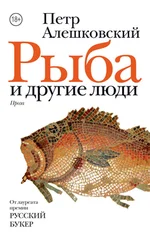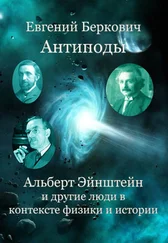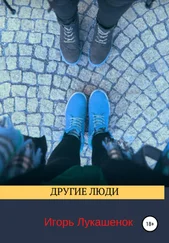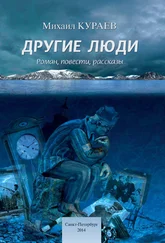Доступный вариант этого довода см. в статье: M. Gladwell The talent myth: Are smart people overrated? Статья была опубликована в журнале New Yorker 23 июля 2002 года. Ее можно найти на сайте http://www.newyorker.com/archive/2002/07/22/020722fa_fact.
Ross, L., T. Amabile, and J. Steinmetz (1977). Social roles, social control, and biases in the social-perception process. Journal of Personality and Social Psychology 35: 485–494.
Все эти примеры – вопросы, которые люди придумали в ходе демонстрации, которую я ежегодно устраиваю в Чикагском университете.
Слова Чертоффа взяты из интервью, которое у него взял М. О’Брайен в 2005 году для газеты American Morning. Текст извлечен из CNN Transcripts ( http://transcripts.cnnn.com/TRANSCRIPTS/0509/01/ltm.03.html).
CNN (September 1, 2005). FEMA chief; Victims bear sone responsibility. Извлечено с сайта http://articles.cnn.com/2005–09–01/weather/katrina/fema.brown_i_mandatory-evacuation-death-toll-relief-effort?_s=PM:WEATHER.
Palazzolo, R. (august 30, 2005). Why do some stay, despite evaluation orders? ABC news. Cм. http://abcnews.go.com/Health/Katrina/story?id=10808738&page=1#.UFCWYY7koZI.
Данные и цитаты, приведенные в этом и предшествующем абзацах, взяты из статьи: N. M. Stephens et al. (2009) / Why did they “choose” to stay? Perspective of Hurricane Katrina observers and survivors. Psychological Survey 20: 878–886.
Lieberman, R. C. (2006). “The storm didn’t discriminate”: Katrina and the politics or color blindness. Du Bois Review 3: 7–22. Исследование людей, уехавших из города и оставшихся в нем, см. в статьях: Elder, K., et al. (2007). African Americans’ decisions not to evacuate New Orleans before Hurricane Katrina: A qualitative study. American Journal of Public Health 97: 2122; Eisenman, D. P., et al. (2007). Disaster planning and risk communication with vulnerable communities: Lessons from Hurricane Katrina. American Journal of Public Health 97: S. 109–115; and Sherman, A., and I. Shapiro (2005). Essential facts about the victims of Hurricane Katrina. Washington, DC: Center for Budget and Policy Priorities.
ESPN (August 31, 2012). Tyler Hamilton: Lance gave me PEDs. Video file. Файл загружен с сайта http://espn.go.com/olympics/cycling/story/_/id/8319041/book-tyler-hamilton-says-lance-armstrong-gave-peds.
Choi, I., R. E. Nisbett, and A. Norenzayan (1999). Causal attribution across cultures: Variation and universality. Psychological Bulletin 125: 47–63.
Krauss, M. W., P. K. Piff and D. Keltner (2009). Social class, sense of control, and social explanation. Journal of Personality and Social Psychology 97: 992–1004.
Li, Y. J., et al. (2012). Fundamental (ist) attribution error: Protestants are dispositionally focused. Journal of Personality and Social Psychology 102: 281–290.
Edelstein, R. S., et al. (2006). Detecting lies in children and adults. Law and Human Behavior 30: 1–10; DePaulo, B. M., et al. (1997). The accuracy-confidence correlation in the detection of deception. Personality and Social Psychology Review 1: 346–357; Malone, B. E., and B. M. DePaulo (2001). Measuring sensitivity to deception. In J. A Hall and F. J. Bernieri (eds.), Interpersonal sensitivity: Theory and measurement (pp. 103–124), Mahwah, NJ: Lawrence Erlbaum Associates; and Vrij, A., and M. Baxter (1999). Accuracy and confidence in detecting truths and lies in elaborations and denials: Truth bias, lie bias and individual differences. Expert Evidence 7: 25–36.
Risen, J. L, and T. Gilovich (2007). Target and observer differences in the acceptance of questionable apologies. Journal of Personality and Social Psychology 92: 418–433.
Chan, E., and J. Sengupta (2010). Insincere flattery actually works: A dual attitudes perspective. Journal of Marketing Research 47: 122–133. Эффективна даже лесть не думающих компьютеров: Fogg, B. J., and C. Nass (1997). Silicon sycophants: The effects of computers that flatter. International Journal of Human-Computer Studies 46: 551–561.
Kelemen, D. (1999). Why are rocks pointy? Children’s preference for teleological explanations of the natural world. Developmental Psychology 35: 1440–1453.
Kelemen, D., and E. Rosset (2009). The human function compunction: Teleological explanation in adults. Cognition 111: 138–143; Rosset, E. (2008). It’s no accident: Our bias for intentional explanations. Cognition 108: 771–780.
Gilbert, D. T., B. W. Pelham, and D. S. Krull (1988). On cognitive busyness: When person perceivers meet persons perceived. Journal of Personality and Social Psychology 54: 733–740.
Steblay, N., et al. (2006). The impact on juror verdicts of judicial instruction to disregard inadmissible evidence: A meta-analysis. Law and Human Behavior 30: 469–492.
Kassin, S. M., and H. Sukel (1997). Coerced confession and the jury: An experimental test of the “harmless error” rule. Law and Human Behavior 21: 27–46; Kassin, S. M., D. Bogart, and J. Kerner (2012). Confessions that corrupt: Evidence from the DNA exoneration case files. Psychological Science 23: 41–45; Wallace, D. B., and S. M. Kassin (2012). Harmless error analysis: How do judges respond to confession errors? Law and Human Behavior 36: 151–157.
Gilbert, D. T., and E. E. Jones (1986). Perceiver-induced constraint: Interpretations of self-generated reality. Journal of Personality and Social Psychology 50: 269–280; Hansen, E. M., C. E. Kimble, and D. W. Biers (2001). Actors and observers: Divergent attributions of constrained unfriendly behavior. Social Behavior and Personality 29: 87–104; Napolitan, D. A., and G. R. Goethals (1979). The attribution of friendliness. Journal of Experimental Social Psychology 15: 105–113; Ross, L., M. R. Lepper, and M. Hubbard (1975). Perseverance in self-perception and social perception: Biased attributional processes in the debriefing paradigm. Journal of Personality and Social Psychology 32: 880–892.
Продолжение списка см. http://voices.yahoo.com/falling-love-movie-set-1267023.html.
Zimbardo, P. (2007). The Lucifer effect: Understanding how good people turn evil. New York: Random House.
Fama, E. F., and K. R. French (2010). Luck versus skill in the cross-section of mutual fund returns. Journal of Finance 65: 1915–1947.
Читать дальше
Конец ознакомительного отрывка
Купить книгу












